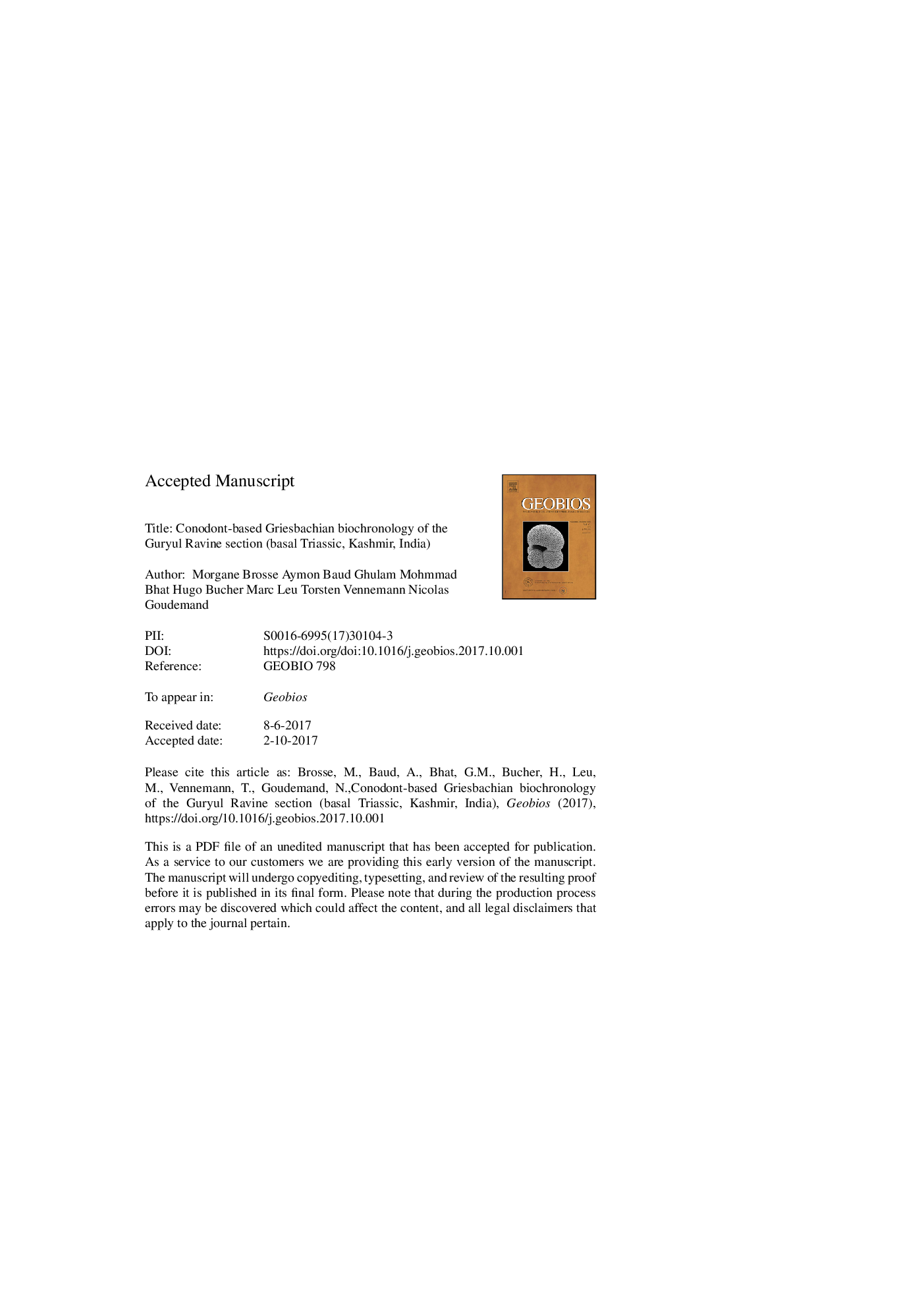| Article ID | Journal | Published Year | Pages | File Type |
|---|---|---|---|---|
| 8916466 | Geobios | 2017 | 74 Pages |
Abstract
The Guryul Ravine section (Kashmir, India) exposes one the world's most continuous carbonate rock successions throughout the Permian-Triassic boundary and beyond. Due to political instability in this region, the biostratigraphy of this section has not been updated for nearly three decades. Following new high-resolution sampling, we reassess here the conodont biochronology and isotopic records of the fifteen lowermost stratigraphical metres (Member E) of the Khunamuh Formation at Guryul Ravine section. This interval includes both the Permian-Triassic and the Griesbachian-Dienerian (lower-upper Induan) boundaries. The First Occurrence of Hindeodus parvus, the index for the base of the Triassic, is confirmed in the middle of sub-member E2 (Unit 56 in Matsuda, 1981 [Journal of Geosciences, Osaka City University 24, 75-108]; our bed GUR09). We characterize 11 Unitary Association Zones based on the conodont record from China and from Guryul Ravine. UAZ1-2 are Late Permian and identified only in South China, UAZ3-11 are identified both in China and Guryul Ravine. The Griesbachian-Dienerian boundary is included within the interval of separation between UAZ8 and UAZ9. At Guryul Ravine, this boundary is precisely constrained between beds GUR310 and GUR311, and corresponds to the replacement of segminiplanate (here Clarkina and Neoclarkina) by segminate (Sweetospathodus and Neospathodus) conodonts. This faunal turnover was possibly linked to a climate change at the Griesbachian-Dienerian transition, from a cool and dry to a hot and humid climate. This transition could be the trigger of the migration of neogondolellids towards high latitudes and of the radiation of neospathodids during the Dienerian.
Related Topics
Physical Sciences and Engineering
Earth and Planetary Sciences
Palaeontology
Authors
Morgane Brosse, Aymon Baud, Ghulam Mohmmad Bhat, Hugo Bucher, Marc Leu, Torsten Vennemann, Nicolas Goudemand,
